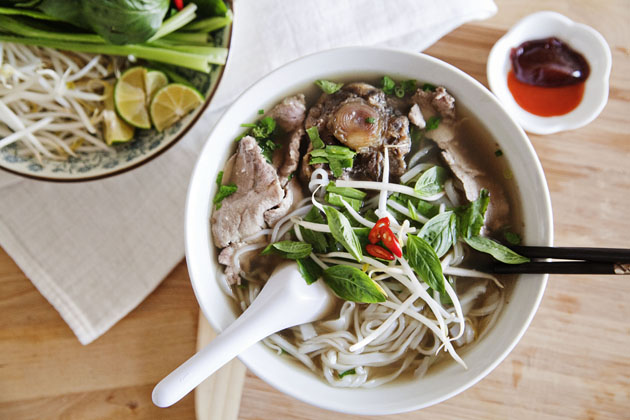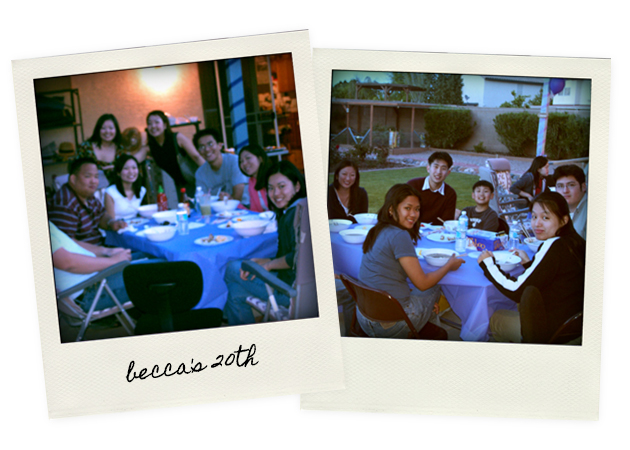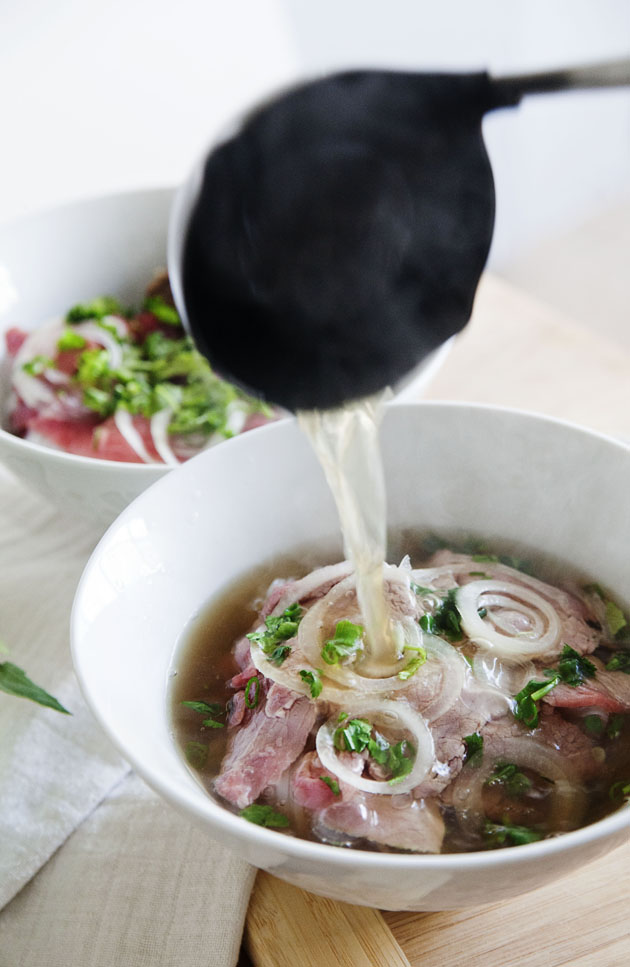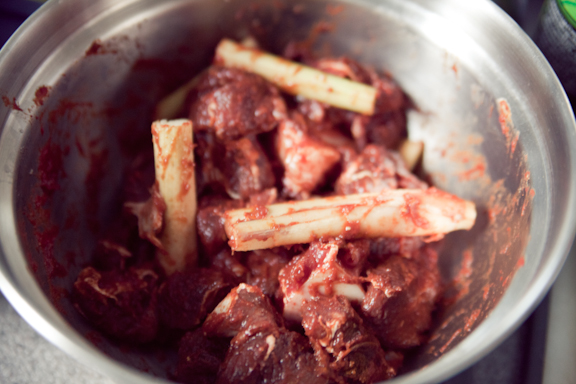I’m not sure when exactly it became cool to eat pho — that iconic Vietnamese dish of thin rice noodles in beef broth perfumed with spices. Nowadays, you’d be hard-pressed to walk down the street without running into a pho restaurant with either a double digit or a bad pun in its name. The pho craze has gotten so big that it’s resulted in pho food trucks, pho sandwiches, instant pho noodles, and specialty pho places that serve it with things like oxtail, filet mignon, ox penis, or — what might even be strangest of all — broccoli and quinoa. :) You can find it at Vegas buffets, at summer camps, school cafeterias, even in rap songs!
Growing up in suburban Phoenix, Arizona, pho was as much a part of my childhood as Kraft macaroni and cheese. But sadly it was often the latter that I requested when friends from school had dinner with us. As an awkward teenager just trying to fit in, I specifically asked my mom one time to make Kraft macaroni and cheese when a friend came over, just to make sure nothing strange would be on the menu that night, like tripe or pigs’ feet. After that time, my mom would automatically get the blue box out whenever a friend stayed for dinner.
When it was just us, though, it wasn’t uncommon for my dad to cook up a pot of pho for a weeknight family dinner, a dinner party with friends, or even for our entire Asian church congregation. In our home, cooking pho was both an elaborate ritual and yet second-nature to us all. It was a two-day affair, and we each knew our roles by heart. In the evening, Dad charred the ginger and onions over an open flame on the stove, filling our home with the sweet, smoky aroma. As the soup cooked overnight, Mom got up from bed every few hours to tend lovingly to the broth, making sure it always stayed at a gentle simmer. The next day, my sister and I washed and picked through all the herbs to make sure every leaf was green and every bean sprout white. And it was my special job to roll the lime under the heel of my foot to make sure it was extra juicy before we washed and cut it into wedges. Then the final, most important job was always Dad’s — tasting and seasoning the broth. He somehow always managed to achieve a balance of flavors that’s been beyond our imitation. It must come from decades of pho-making experience.
When I went to college, I finally met other people who enjoyed trying new foods and happened to love pho just as much as I did. Not only was it okay to like pho, it was maybe even cool. And having a dad who knew how to make it — now that was something to to be proud of. And so for my 20th birthday, I invited all my friends over and asked my dad to make his famous pho for my birthday celebration.
I’ve been lucky enough to have lived close to my parents or, later, in cities where good pho could still be sought out. But that all changed a year and a half ago, when I moved to a tiny island in the middle of the Caribbean. While there’s no shortage of things like sugar cane or other tropical fruits here (some of which also grow in Vietnam), I had to resort to bringing my own rice noodles. And I definitely had to start making my own pho.
My sister, on the other hand, has not come by pho so easily in the places she’s lived. Whether it was in the desertlands of Tucson, Arizona, or sub-Siberian Beijing where she lives now, she had long ago prepared for pho emergencies by taking down Dad’s notes. And so it is her recipe and notes that are shared below. And it was this recipe that I followed when I finally simmered my first pot of pho broth earlier this year.
What I’ve found is that my love affair with pho is only deepening as I learn to appreciate the complexity and subtleties of fine pho-making. It’s not until you sit down and learn how to make pho from scratch that you finally understand the whole story of pho. How the smoky sweetness comes from charred onion, the rich mouthfeel of the broth from bones full of marrow and collagen, the clear golden broth color from hours at a bare simmer, and the soft-yet-chewy noodles from flash-boiled, fresh rice noodles.
And when you combine all that with the childhood memories of a mother who’d remember to leave out the scallions and cilantro for a picky eater like me, or a father whose artistic temperament translated into perfectly balanced broth every time, or a family of four who often couldn’t wait for the broth to finish simmering the next day that we’d just drink a bowl of the soup with some meatballs as a midnight snack — well, it’s not hard to understand why I often tell people that if I could have one last meal before I die, I would choose to eat Dad’s pho.
Click through for notes and recipe.




















Connect with us